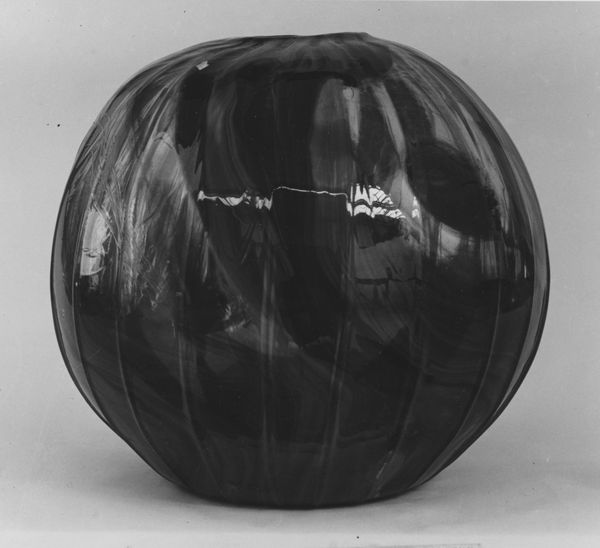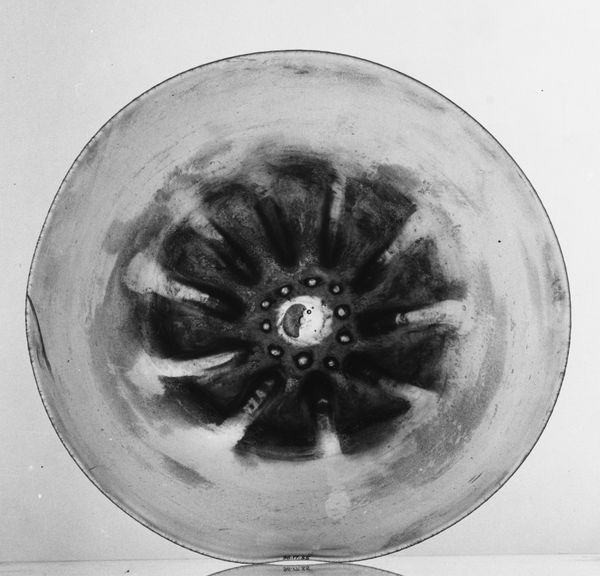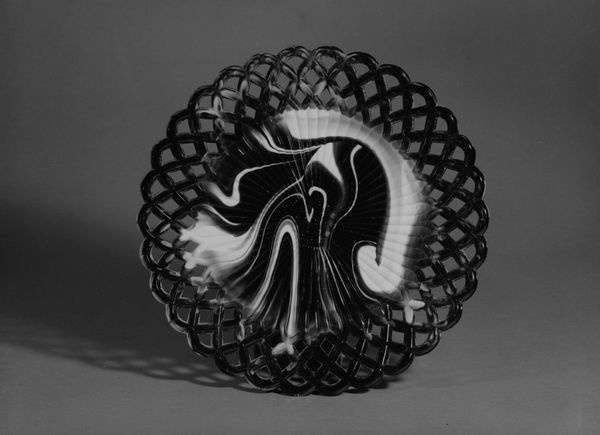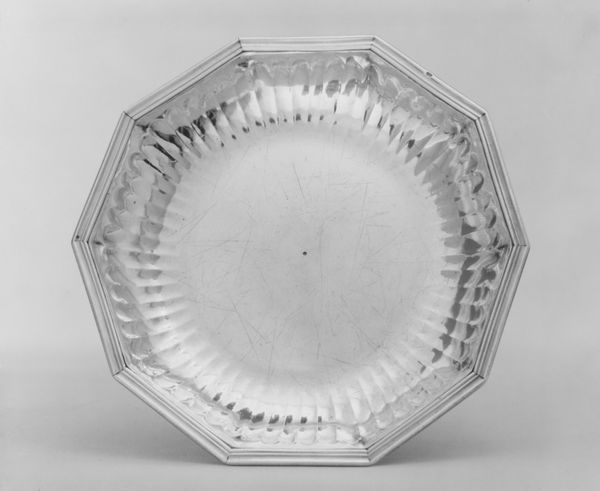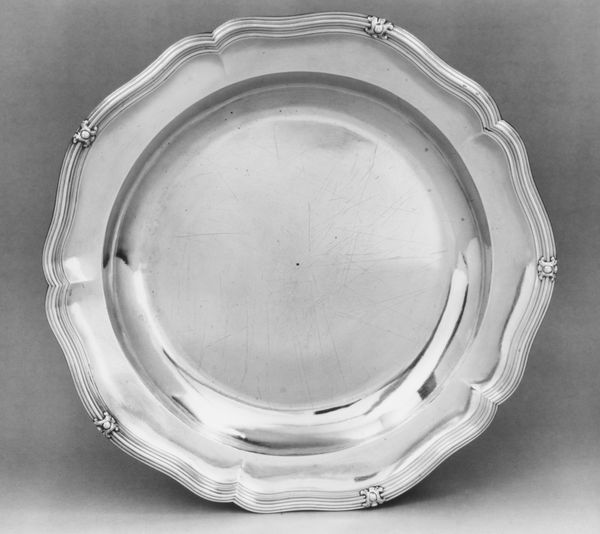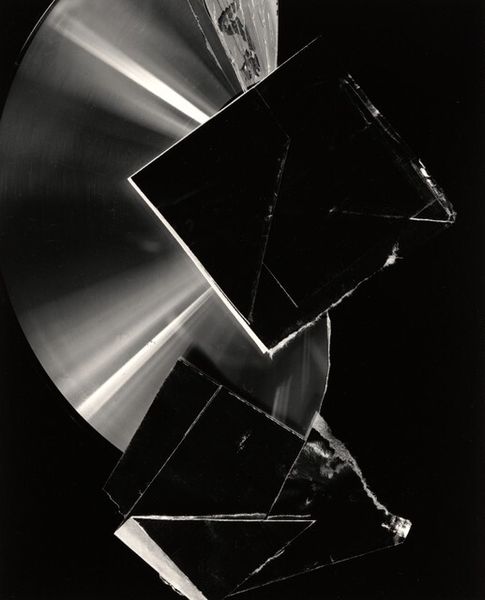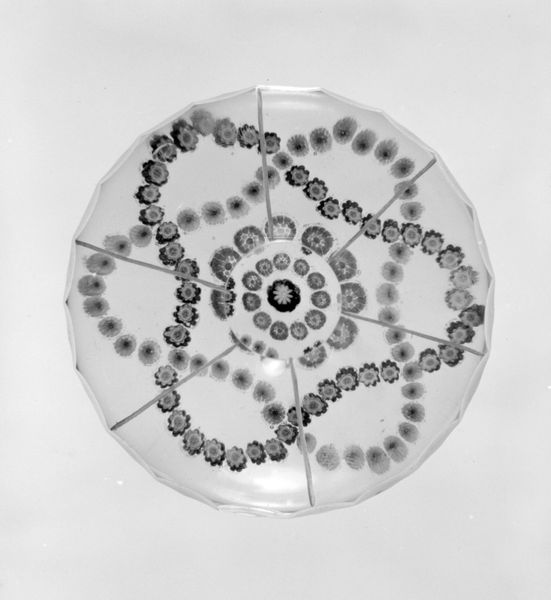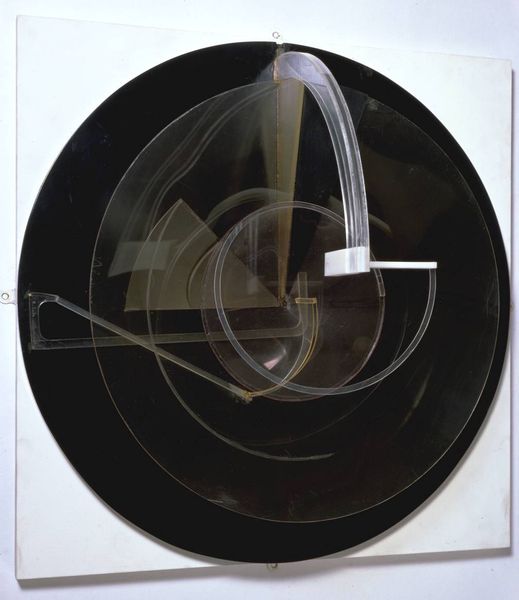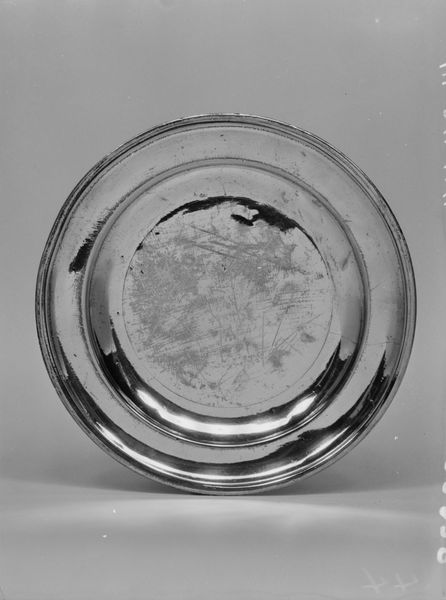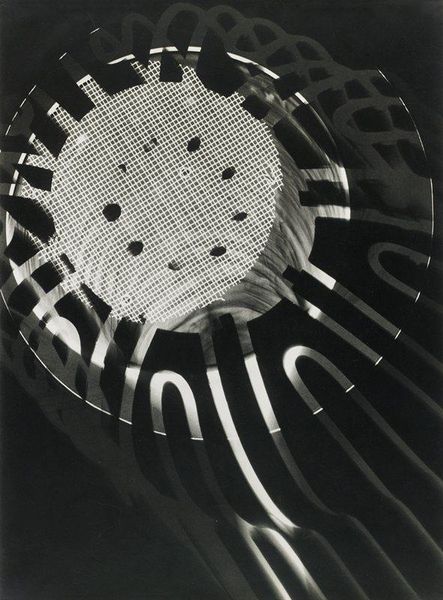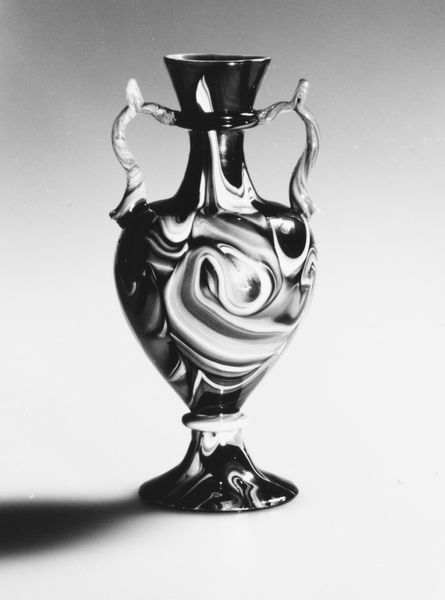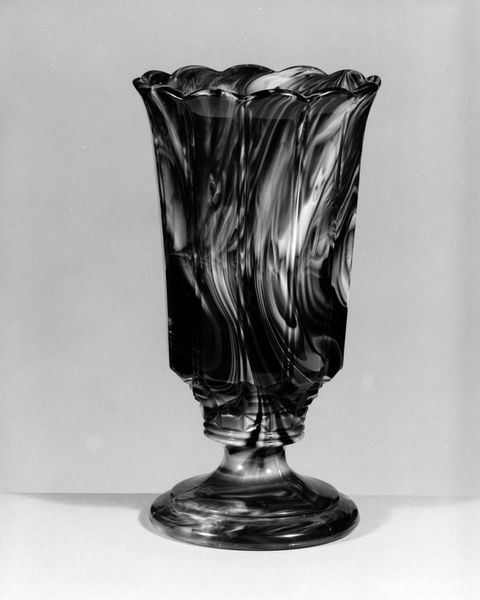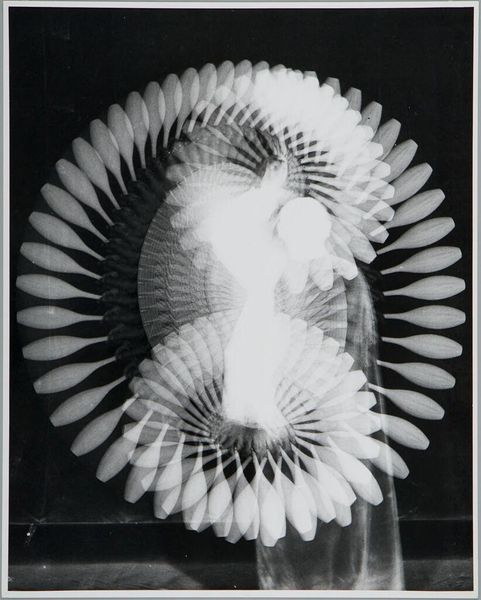
glass
#
art-nouveau
#
glass
#
geometric
#
black and white
#
abstraction
#
united-states
#
decorative-art
Dimensions: Diam. 15 7/8 in. (40.3 cm)
Copyright: Public Domain
Editor: So, we have here a glass plaque by Louis Comfort Tiffany, made between 1893 and 1896. The swirling, almost dizzying patterns give it a really dynamic feel, even though it's a still object. How do you interpret the cultural context surrounding a piece like this? Curator: It’s important to remember Tiffany operated during the height of the Gilded Age. Wealth was concentrated, and displays of opulence were common. Consider the role of decorative arts in this context. Was this plaque meant for a private residence, or a more public space? How does Tiffany’s emphasis on natural forms and innovative glass techniques align with, or perhaps challenge, the established artistic institutions of the time? Editor: That makes me wonder about the intended audience. I guess I had been viewing it as purely aesthetic, but could it have served a political purpose, reflecting or even subverting the values of that era? Curator: Exactly. The Art Nouveau movement, of which Tiffany was a major proponent, often challenged academic art traditions, and also sought to democratize art by making aesthetically pleasing objects available to a broader audience. But, who *actually* had access to these "democratic" objects, right? Who was invited to partake in art viewing, who had money to invest in these forms? The materials, the level of craftsmanship… it speaks to a specific level of privilege, despite the aesthetics being, to some, maybe radical in their appearance. Does that nuance shift your view of it at all? Editor: It really does. I hadn't thought about the exclusivity implied by the materials and craftsmanship. I suppose I was romanticizing Art Nouveau's "democratization" of art a bit too much. Curator: That's a crucial realization! Examining the social and economic underpinnings of art production helps us understand not just the art itself, but its complex relationship to the society it reflects and influences. Editor: Thanks, I learned a lot from looking at it that way. Seeing past just the aesthetics has made this piece much more interesting. Curator: And that critical perspective is what makes art history so rewarding. It's never just about what's on the surface.
Comments
No comments
Be the first to comment and join the conversation on the ultimate creative platform.
